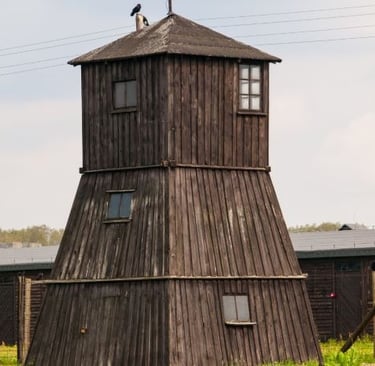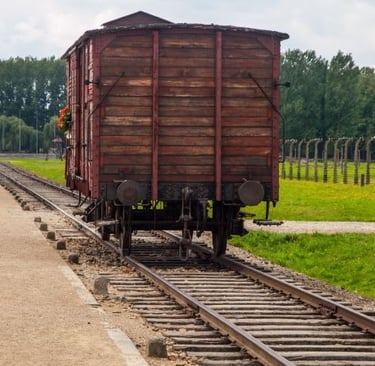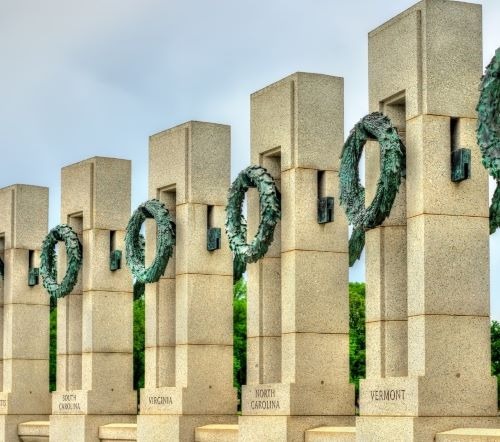A Visitor's Guide to Exploring Amsterdam WWII Tour: Small Group Holocaust Excursion
Experience a respectful, small-group journey from Amsterdam to a WWII concentration camp. Expert-led, personalized visits with round-trip transport.
NETHERLANDSDAY TOUR
6/16/20255 min read
DISCLOSURE:
There may be affiliate links on this post. If you buy something using these links i may receive a small commission at zero cost to you.
The Historical Significance of WWII Concentration Camps in Europe
The establishment of concentration camps across Europe during the 1930s was a grim reflection of the oppressive regime enacted by the Nazis. These camps served as instruments of terror, designed to detain, exploit, and exterminate individuals deemed undesirable according to Nazi ideology. Initially used to imprison political dissidents and social outcasts, the scope of the camps expanded significantly as the regime implemented their systematic approach to genocide, most notably during the Holocaust. Within this broader context, the Netherlands experienced its own devastating impact, with concentration camps like Vught becoming sites of immense suffering and loss.
The historical significance of these camps cannot be overstated; they represent one of the darkest chapters in human history. Concentration camps were places where the fundamental rights and humanity of individuals were stripped away, reflecting the terrifying reach of totalitarian governance. In the Dutch context, the Vught Camp, located near Amsterdam, embodies the tragic story of thousands who endured unimaginable hardships at the hands of an oppressive state. Understanding the role of these camps in the historical narrative of WWII is essential for acknowledging the depth of anguish inflicted upon countless lives.
Visiting WWII Nazi Camp Vught: An Eye-Opening Experience
The visit to the WWII Nazi Camp Vught is an opportunity to engage in a profound historical exploration, offering a unique perspective on the impact of the Holocaust. This camp, operational during World War II, holds a significant place in Dutch history, serving as an internment facility for Jews and other groups targeted by the Nazi regime. As part of this small group Holocaust excursion in Amsterdam, participants will have the chance to navigate the camp's layout, which includes key structures such as barracks, a crematorium, and reconstructed watchtowers.
When entering the camp, visitors may first notice the extensive grounds and the somber atmosphere that pervades the area. The barracks, once housing countless detainees, provide stark reminders of the hardships endured by those who suffered within their walls. As participants walk through these spaces, they are encouraged to reflect on the human stories behind them, fostering a connection to the past that is both educational and deeply moving.
Upon reaching the crematorium, the reality of the atrocities committed is further underscored. This site serves as a chilling reminder of the loss of innocent lives, evoking an emotional response that is both necessary and challenging. The reconstructed watchtowers, which once served as a means of surveillance and oppression, now stand as poignant symbols of the vigilance required to remember this dark chapter of history.
Preparing for such a visit involves not only logistical considerations but also emotional readiness. Visitors may wish to take time to process their feelings before arriving, understanding that witnessing these historical remnants can elicit a range of emotions. Engaging with the camp’s history and the stories of its past inhabitants can also provide valuable context, allowing individuals to honor their memories and comprehend the significance of this powerful experience.
The Role of Guided Tours in Honoring Holocaust Victims
Guided tours serve a significant purpose when it comes to commemorating the lives lost during the Holocaust. Specifically, small group excursions offer a more intimate and immersive experience that allows participants to engage with the history on a personal level. Knowledgeable guides not only lead visitors through historical locations, but they also provide context and insights that are integral to understanding the complex narratives of this tragic period. These guides often share personal stories and accounts that breathe life into the historical facts, creating a more relatable and emotional connection to the past.
Moreover, the role of an audio tour in this context cannot be understated. Audio tours complement the guide's commentary by providing additional layers of information that enrich the visitor’s comprehension of the memorialization efforts at various historical sites. They allow participants to explore at their own pace, pausing to reflect on the stories shared or to absorb the significance of the location they are visiting. This additional resource enhances the overall experience, helping to ensure that the memories of those who suffered are preserved and honored appropriately.
Through guided tours, attendees not only learn about historical events but also gain insights into the human stories behind these occurrences. This dual approach—combining the expertise of a guide with supplementary audio content—creates a more vivid narrative of the Holocaust, fostering a deeper appreciation for the importance of remembrance. As participants reflect on the compelling narratives, they are not only educated about past atrocities but are also encouraged to consider the vital lessons that history imparts. Maintaining awareness of such acts is crucial in a world where the collective memory of suffering must be upheld to prevent future atrocities.
Practical Information for Your Small Group Holocaust Excursion in Amsterdam
When planning your small group Holocaust excursion in Amsterdam, several logistical details can enhance your experience while allowing you to navigate the day efficiently. First and foremost, consider the convenience of round-trip transfers from central Amsterdam to the Holocaust-related sites, such as the Auschwitz memorial or the National Holocaust Museum. Booking a guided tour that includes transportation is advisable, as this hassle-free option alleviates the stress of navigating the city on your own.
For the excursion, comfort is crucial. Wear comfortable walking shoes, as many areas involve considerable walking, and ensure you dress appropriately for the weather. A light jacket or umbrella could be useful, especially during the unpredictable seasons. Furthermore, it's worth bringing along a refillable water bottle and some snacks, as these tours typically last several hours, and it is essential to stay hydrated and energized.
In terms of ticketing, it is recommended to book your small group Holocaust excursion well in advance. Many tours have limited spaces to ensure an intimate experience, allowing for in-depth discussion and personal reflection during the visit. Be sure to check availability and cancellation policies when making reservations to avoid unforeseen complications.
Respect and reflection are at the heart of this historic excursion. As you prepare for your visit, approach the experience with sensitivity towards the profound histories associated with the locations you will explore. Taking time to appreciate the significance of each site will enrich your understanding and create a more meaningful experience. Therefore, adhere to guidelines provided by your tour guide, maintain an appropriate demeanor, and engage thoughtfully during discussions.
Summary:
On this intimate, small-group excursion from central Amsterdam, you’ll explore Camp Vught—one of the Nazi concentration camps that imprisoned some 31,000 people during WWII.
Walk through original barracks, stand before the crematorium, and see the reconstructed watchtowers as you follow an audio tour, complemented by your guide’s expert commentary.
With hassle-free, round-trip transfers included and a maximum of just eight participants, you’ll gain a deeply personal, insightful perspective on this poignant chapter of history.








